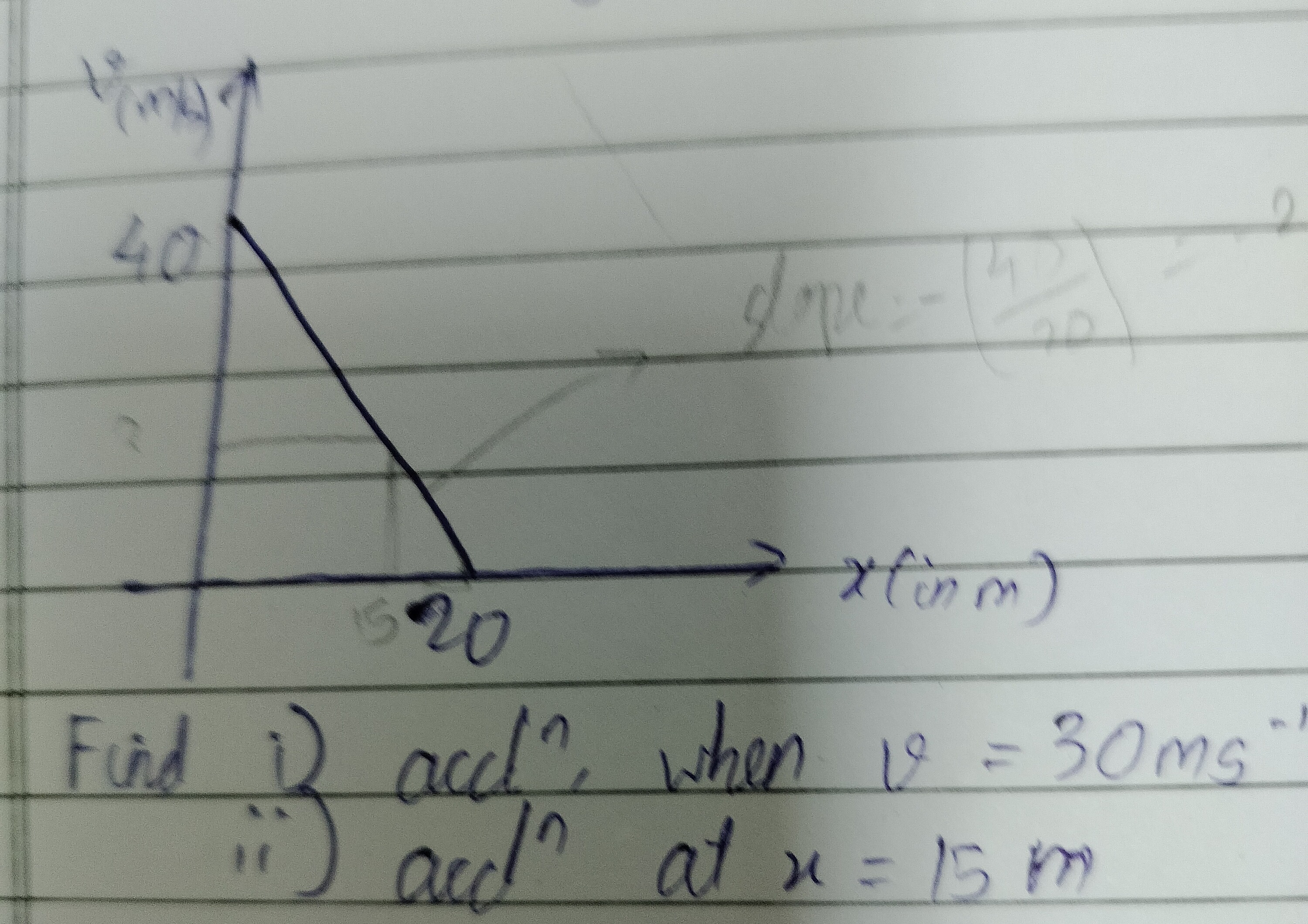Question
Question: Find ⅰ) acd", when v = 30ms$^{-1}$ ⅱ) acd" at x = 15 m...
Find ⅰ) acd", when v = 30ms−1
ⅱ) acd" at x = 15 m

-1 ms−2 for i) and -1 ms−2 for ii)
Solution
The graph shows the relationship between v2 and x. The graph is a straight line passing through the points (x1,v12)=(0,40) and (x2,v22)=(20,0).
The equation of the straight line is given by v2−v12=x2−x1v22−v12(x−x1). Substituting the given points, we get: v2−40=20−00−40(x−0) v2−40=20−40x v2−40=−2x v2=−2x+40
The acceleration a is related to velocity v and position x by the formula a=vdxdv. We can find dxdv by differentiating the equation v2=−2x+40 with respect to to x. Differentiating both sides with respect to x: dxd(v2)=dxd(−2x+40) Using the chain rule on the left side, dxd(v2)=dvd(v2)dxdv=2vdxdv. So, 2vdxdv=−2. Dividing by 2, we get vdxdv=−1. Since a=vdxdv, the acceleration is a=−1ms−2.
The acceleration is constant and equal to −1ms−2 for the motion described by the equation v2=−2x+40.
ⅰ) Find acceleration when v=30ms−1. Since the acceleration is constant, its value is −1ms−2 at any velocity for which the relationship v2=−2x+40 holds. While the graph shows the velocity decreasing from 40≈6.32ms−1 to 0ms−1, if we assume the relationship holds even for v=30ms−1, the acceleration is still the constant value we calculated. Acceleration when v=30ms−1 is −1ms−2.
ⅱ) Find acceleration at x=15m. Since the acceleration is constant, its value at x=15m is −1ms−2. We can also find the velocity at x=15m: v2=−2(15)+40=−30+40=10. v=10ms−1. The acceleration at this position is −1ms−2.
Explanation of the solution: The given graph is of v2 versus x. The graph is a straight line, indicating a linear relationship between v2 and x. The equation of the line is found to be v2=−2x+40. The acceleration a is related to v and x by a=vdxdv. Differentiating the equation v2=−2x+40 with respect to x, we get 2vdxdv=−2, which simplifies to vdxdv=−1. Thus, the acceleration a=−1ms−2. Since the acceleration is a constant value, it is the same at any given velocity or position within the motion described by the relationship.
